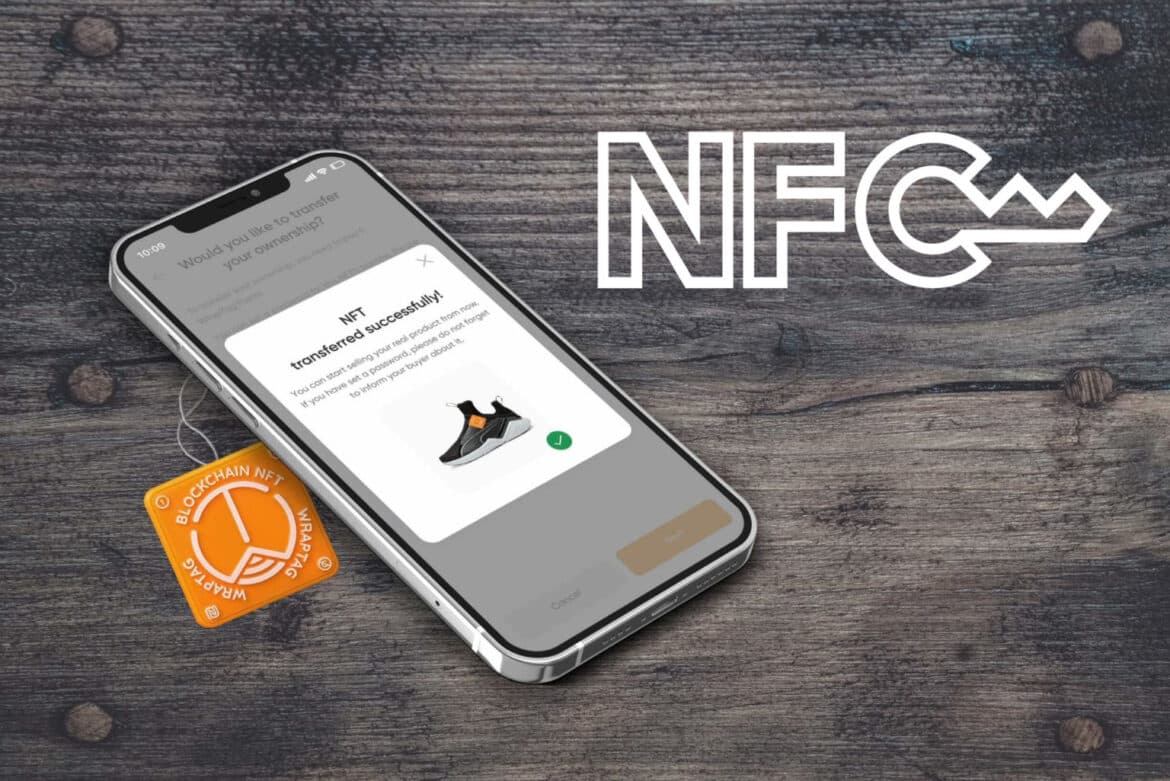NFC is short for “Near Field Communication.” The term is mostly used in connection with smartphones, because NFC allows you to make secure contactless payments.
NFC enables contactless payments
As the term “near field communication” suggests, this payment method relies on the devices used for the transaction being close to each other.
- NFC is a wireless communication standard for data transmission. The three letters stand for “Near Field Communication,” i.e., communication between two elements that are close to each other.
- The special feature of NFC is that both devices must be held a few centimeters apart for transmission to take place.
- This, in turn, is the biggest advantage of NFC: it is extremely secure against external eavesdropping. Potential perpetrators would have to get very close to you in order to spy on your data.
- Although the transfer speed of 424 kbit/s is lower than that of Bluetooth, it is still sufficient to send small amounts of data such as Internet links in a fraction of a second.
- NFC thus offers a fast, simple, and relatively secure way to transfer data with a cell phone without taking a major security risk, as can be the case with alternatives.
Areas of application for near field communication
NFC is used to transfer data over short distances. This payment method is particularly suitable for settling relatively small amounts and is therefore used in the area of micropayments. There are also a number of establishments in Germany that offer this function.
- In many supermarkets such as Lidl, Aldi, and Rewe, you can pay by NCF using your smartphone. All you have to do is hold your smartphone or NFC-enabled credit card up to the terminal to pay the amount. This is very secure and even faster than conventional methods.
- NFC is also frequently found in public transportation. Contactless payment and the use of digital tickets with NFC are standard in many cities. You hold your smartphone or NFC card up to the reader and can then conveniently get on and off.
- Some companies use NFC to secure access to buildings. You can use your NFC-enabled ID card or smartphone to open doors without a key or chip card.
- NFC is also quite common for exchanging data between smartphones or tablets. For example, if you hold two Android devices with NFC chips next to each other, you can transfer data with a single click – such as links, contact details or even photos.
- Information transfer with NFC tags: It is also possible to use small NFC tags in advertising posters to pass on information such as the relevant calendar entry or a link to a website.
- At some colleges and universities, students can use the NFC chips in their ID cards to pay small amounts of money.
- NFC is increasingly being used in electronic ID cards and passports. Contactless transmission of your data allows you to identify yourself quickly and securely, for example at government agencies or border controls.
- NFC is used in smart homes to control devices or activate scenarios. For example, you can turn on the lights or deactivate the alarm system by tapping the door frame with your NFC-enabled device.
- Smartwatches, fitness trackers, and other wearables are often equipped with NFC today. This allows you to make contactless payments, open your front door, or exchange data with other devices without having to take out your smartphone.
How do NFC tags work?
NFC technology is an offshoot of RFID technology. NFC tags are basically RFID tags. The only difference is that the frequency is fixed.
- RFID stands for “radio frequency identification.” A distinction can be made between active and passive RFID transponders.
- The most well-known type is the passive RFID transponder. To interact with it, a reader emits an electromagnetic field. The RFID chip picks up the transmitted energy via an antenna and can then execute the commands it receives. When an RFID tag is read, the electromagnetic field of the transmitter is weakened or the modulated signal is reflected in reverse phase, allowing the reader to access the stored information.
- Active RFID transponders usually have their own power supply, which significantly increases their range.
- Classic (passive) RFID transponders, which can also be found on clothing in department stores, have an antenna that resonates at 125 kHz. However, other designs with different frequencies are also possible. NFC tags are usually only designed for 13.56 MHz. You can read and write these with most smartphones.
Security with NFC
The short range of NFC offers an important security advantage: communication only takes place when devices are very close to each other. This makes remote eavesdropping attempts virtually impossible.
- In addition, biometric authentication methods such as fingerprint or facial recognition are now used for NFC payments. These methods ensure that only you can authorize payments.
- The use of dynamic tokens is also now commonplace. The NFC device generates a unique code for each transaction that cannot be reused. This ensures that your payment data remains protected.
- However, RFID transponders do not offer 100% security: numerous devices can be found on the Internet that can be used to make a copy of a scanned RFID tag. However, with classic passive RFID chips, the copying device must be very close to the chip: Unnoticed data theft is usually not possible.

